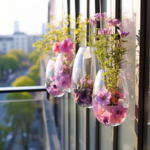From the vibrant fields of Tuscany to the serene gardens of Japan, flowers have been an intrinsic part of human culture and expression for centuries. Their beauty captivates, their fragrances enchant, but beyond their aesthetic appeal lies a rich tradition of symbolism known as floriography, or the language of flowers. This silent language has been used to convey messages, emotions, and sentiments without uttering a single word, creating a floral dialogue that transcends time and geography.
The Origins of Floriography
The roots of floriography can be traced back to ancient civilizations, where flowers were often imbued with specific meanings. In ancient Egypt, lotus flowers symbolized rebirth and purity, while in Greece, laurel wreaths represented victory and honor. However, the codification of floral meanings as a systematic form of communication reached its zenith during the Victorian era. In a time when societal norms restricted open expressions of emotion, especially between lovers, the Victorians turned to flowers to say what could not be spoken.
Victorian Flower Dictionaries
During the 19th century, flower dictionaries became popular, detailing the meanings of various flowers and their combinations. These guides enabled individuals to craft intricate messages through bouquets, each selection carefully chosen to convey specific sentiments. For instance, a red rose symbolized deep love and passion, while a yellow rose indicated friendship or jealousy. The subtle nuances extended to flower arrangements and even the way a bouquet was presented—an upright position signified a positive message, while inverted flowers conveyed the opposite.
Floral Symbols Across Cultures
While Victorian England is often credited with formalizing the language of flowers, floriography is a global phenomenon with cultural variations. In Japan, the tradition of Hanakotoba assigns meanings to flowers, much like its Western counterpart. Cherry blossoms, or sakura, symbolize the transient nature of life, a poignant reminder of the fleeting beauty of existence. In contrast, chrysanthemums represent longevity and rejuvenation, often associated with the imperial family.
In Persia, the practice of using flowers to convey messages dates back to the Ottoman Empire. Known as “Selam,” this floral communication allowed individuals to express their feelings discreetly. The tulip, for instance, was a symbol of perfect love, while the blue hyacinth stood for constancy.
Modern Interpretations and Uses
Today, the language of flowers is enjoying a resurgence as people seek meaningful ways to connect and express emotions. Florists often incorporate traditional meanings into their arrangements, offering customers the opportunity to send not just flowers, but heartfelt messages. Brides meticulously select wedding flowers based on their symbolic meanings, weaving stories of love, commitment, and hope into their ceremonies.
In addition to personal use, floriography finds its place in literature, art, and popular culture. Authors and artists use flowers to add layers of meaning to their works. For example, in Shakespeare’s plays, flowers often symbolize key themes and emotions—Ophelia’s garland in Hamlet is a poignant illustration of her descent into madness, each flower carrying a specific meaning related to her tragic fate.
Creating Your Own Floral Messages
Engaging with the language of flowers can be a delightful and creative endeavor. Whether you’re crafting a bouquet for a special occasion or simply want to infuse your garden with deeper meaning, understanding floriography allows you to communicate on a profound level. Here are a few tips to get started:
- Know Your Flowers: Familiarize yourself with the traditional meanings of common flowers. Roses, lilies, daisies, and tulips each carry specific connotations that can be blended to create a unique message.
- Consider the Color: Color plays a crucial role in floriography. Red often denotes love or passion, white symbolizes purity and innocence, and yellow can indicate friendship or jealousy.
- Combine Thoughtfully: The combination of flowers can alter or enhance their meanings. Pairing roses with ivy can symbolize a faithful love, while adding rosemary signifies remembrance.
- Personal Touch: While traditional meanings are a great guide, don’t be afraid to infuse your own sentiments into your floral arrangements. Personal associations with certain flowers can add a unique and intimate touch to your message.
The language of flowers, or floriography, offers a timeless and enchanting way to communicate emotions and sentiments. By understanding the historical and cultural contexts of floral symbolism, we can appreciate the depth and beauty of this silent language. Whether used in personal expressions, artistic endeavors, or literary works, flowers continue to speak volumes, connecting us to one another and to the rich tapestry of human experience. Through the delicate petals of a flower, we find a universal language that transcends words, bridging the past and present in a vibrant dialogue of color and meaning.


